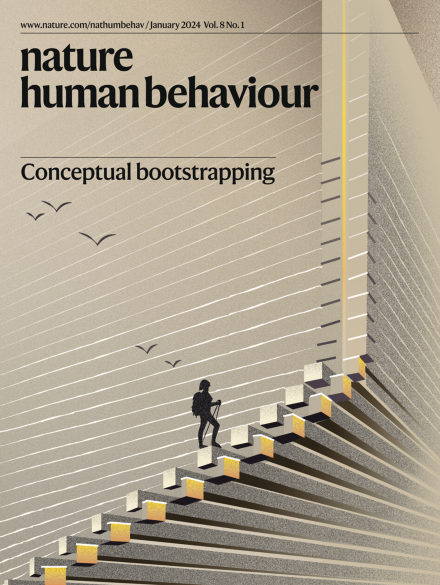相互作用的螺旋波模式是大脑复杂动态的基础,与认知处理有关
IF 21.4
1区 心理学
Q1 MULTIDISCIPLINARY SCIENCES
引用次数: 5
摘要
人脑的大规模活动呈现出丰富而复杂的模式,但这些模式的时空动态及其在认知中的功能作用仍不清楚。在这里,我们通过分析人类大脑皮层功能磁共振成像信号的逐时波动特征,发现在静息和认知任务状态下,类似螺旋的旋转波模式(脑螺旋)非常普遍。这些脑螺旋在皮层中传播,同时围绕其相位奇异中心旋转,从而产生了具有非稳态特征的时空活动动力学。这些脑螺旋的特性,如旋转方向和位置,与任务相关,可用于对不同的认知任务进行分类。我们还证明,多个相互作用的脑螺旋参与协调分布式功能区的相关激活和去激活;这种机制使任务驱动的活动流在认知加工过程中自下而上和自上而下两个方向之间灵活重组。我们的研究结果表明,大脑螺旋组织了人类大脑复杂的时空动态,并与认知处理具有功能相关性。作者使用流体物理学家最熟悉的概念,优雅地解决了描述大规模大脑活动模式的复杂问题,为今后研究其相关性和功能重要性奠定了坚实的基础。本文章由计算机程序翻译,如有差异,请以英文原文为准。

Interacting spiral wave patterns underlie complex brain dynamics and are related to cognitive processing
The large-scale activity of the human brain exhibits rich and complex patterns, but the spatiotemporal dynamics of these patterns and their functional roles in cognition remain unclear. Here by characterizing moment-by-moment fluctuations of human cortical functional magnetic resonance imaging signals, we show that spiral-like, rotational wave patterns (brain spirals) are widespread during both resting and cognitive task states. These brain spirals propagate across the cortex while rotating around their phase singularity centres, giving rise to spatiotemporal activity dynamics with non-stationary features. The properties of these brain spirals, such as their rotational directions and locations, are task relevant and can be used to classify different cognitive tasks. We also demonstrate that multiple, interacting brain spirals are involved in coordinating the correlated activations and de-activations of distributed functional regions; this mechanism enables flexible reconfiguration of task-driven activity flow between bottom-up and top-down directions during cognitive processing. Our findings suggest that brain spirals organize complex spatiotemporal dynamics of the human brain and have functional correlates to cognitive processing. Using concepts mostly familiar to fluid physicists, the authors manage to elegantly tackle the complex problem of describing large-scale brain activity patterns, providing a rich foundation for the future study of their relevance and functional importance.
求助全文
通过发布文献求助,成功后即可免费获取论文全文。
去求助
来源期刊

Nature Human Behaviour
Psychology-Social Psychology
CiteScore
36.80
自引率
1.00%
发文量
227
期刊介绍:
Nature Human Behaviour is a journal that focuses on publishing research of outstanding significance into any aspect of human behavior.The research can cover various areas such as psychological, biological, and social bases of human behavior.It also includes the study of origins, development, and disorders related to human behavior.The primary aim of the journal is to increase the visibility of research in the field and enhance its societal reach and impact.
 求助内容:
求助内容: 应助结果提醒方式:
应助结果提醒方式:


